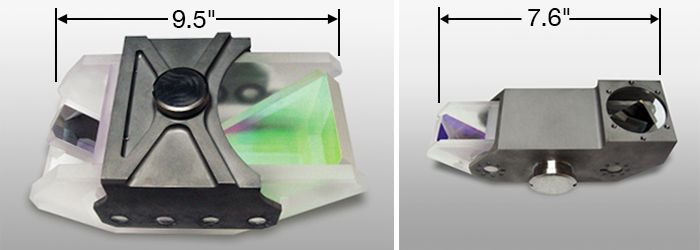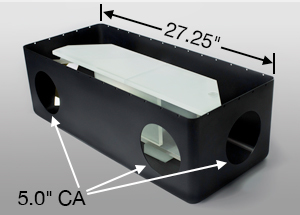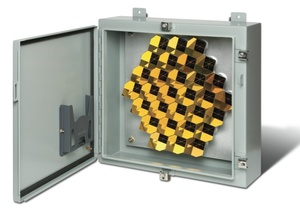MAPPING & TOPOGRPAHY
PLX has been producing space-qualified instruments and components for over 40 years and cover a wide range of applications. PLX’s optical technologies are a part of the worlds most notable space missions.
- Space / Aerospace Applications
- Mapping and Topography
- Environmental and Atmospheric
- Scientific
- Laser Communication
PLX Lateral Transfer Hollow Retroreflectors™ (LTHR’s™) will be a part of the Alignment Monitoring and Control System (AMCS) of the ATLAS program.
PLX was awarded a contract from Ball Aerospace & Technologies Corporation for two LTHR’s™ for the Advanced Topographic Laser Altimeter System (ATLAS) program. ATLAS is the sole instrument on the ICESat-2 satellite scheduled for a June 2018 launch.

The two LTHRs™ are part of the Alignment Monitoring and Control System. They are used to keep the laser and receiving telescope bore-sighted to each other during orbit.
The Ice, Cloud and land Elevation Satellite-2, or ICESat-2, will measure the height of a changing Earth – one laser pulse at a time, 10,000 laser pulses a second. Slated for launch in 2018, ICESat-2 will carry a laser altimeter that detects individual photons, allowing scientists to measure the elevation of ice sheets, sea ice, forests and more in unprecedented detail.
ICE, Cloud, and Land Elevation Project (ICESat-2): 2017 launch.
The mission of the satellite is to deploy a space borne sensor to collect altimetry data of the Earth’s surface optimized to measure ice sheet elevation change and sea ice thickness, while generating an estimate of global vegetation biomass.
The sole instrument on ICESat-2 will be the Advanced Topographic Laser Altimeter System or ATLAS. The ATLAS laser will emit visible, green laser at a wavelength of 532nm. AS ICESat-2 orbits, ATLAS will split the laser into 6 beams, arranged in 3 pairs, with 3.3km between pairs. It will fire at a rate of 10kHz - 10,000 times per second.

PLX manufactured a vacuum-compatible Lateral Transfer Hollow Retroreflector™ with a 5” aperture, 18.5” separation and 1-arc-second accuracy for the ICESat-2 program. It will be used for Boresighting and performance testing of ATLAS.
References:
- http://icesat.gsfc.nasa.gov/icesat2/
- http://icesat.gsfc.nasa.gov/icesat2/instrument.php
- http://www.orbital.com/SatelliteSpaceSystems/Publications/ICESat-2_factsheet.pdf
Retroreflector Array™ for NASA’s Endeavor Shuttle Radar Mission.

The mission created a high-resolution digital topographic database of the Earth.
JPL deployed the arrays during the mission. These are highly reflective structures that appear as a bright point in the radar image. These reflectors deployed with precisely measured coordinates served as control points in the Shuttle Radar Topography Mission data. This mission was flown in February 2000.
PLX also built Retroreflector components for NASA’s Discovery Shuttle Long-Distance Laser Test as well as the Relay Mirror Lace Experiments.
For more information, please visit our contact us page
